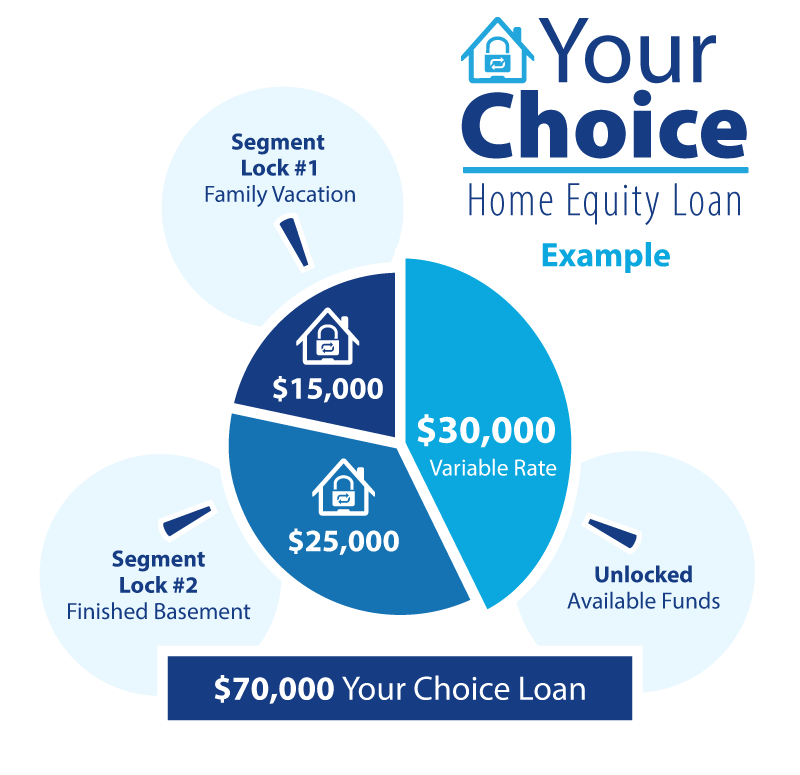Demystifying the Qualification Refine for an Equity Car Loan Authorization
Navigating the certification procedure for an equity funding approval can frequently feel like deciphering an intricate challenge, with numerous elements at play that determine one's qualification. From stringent credit history needs to thorough residential or commercial property assessments, each action holds importance in the lending institution's decision-making procedure. Recognizing the interplay in between debt-to-income ratios, loan-to-value ratios, and various other crucial criteria is critical in protecting authorization for an equity car loan. As we delve deeper right into the intricacies of these needs, a more clear course arises for potential debtors looking for economic leverage with equity finances.
Secret Eligibility Standard
To get an equity car loan approval, conference particular essential qualification standards is essential. Lenders commonly require applicants to have a minimum credit rating, often in the range of 620 to 700, relying on the establishment. A strong credit report, showing a responsible settlement performance history, is additionally important. In addition, lenders analyze the candidate's debt-to-income ratio, with the majority of choosing a ratio below 43%. This shows the customer's capacity to manage additional debt properly.
Additionally, loan providers assess the loan-to-value proportion, which contrasts the quantity of the funding to the assessed worth of the property. Typically, loan providers choose a lower proportion, such as 80% or less, to mitigate their threat. Work and revenue stability are key elements in the authorization process, with lending institutions seeking guarantee that the debtor has a reliable resource of income to settle the funding. Meeting these crucial eligibility criteria boosts the probability of securing authorization for an equity financing.
Credit Rating Rating Value

Lenders usually have minimum debt rating requirements for equity financings, with scores over 700 normally taken into consideration good. By keeping a good credit report rating via prompt costs repayments, reduced credit scores use, and accountable loaning, applicants can improve their possibilities of equity finance authorization at affordable rates.

Debt-to-Income Ratio Analysis
Given the vital function of credit rating in figuring out equity finance authorization, one more important element that lenders assess is a candidate's debt-to-income proportion analysis. The debt-to-income ratio is a key financial metric that offers understanding right into an individual's ability to handle extra financial debt sensibly. Lenders determine this ratio by splitting the total monthly financial debt obligations of a candidate by their gross monthly revenue. A reduced debt-to-income ratio suggests that a customer has more earnings available to cover their financial debt payments, making them an extra appealing candidate for an equity funding.
Lenders commonly have certain debt-to-income ratio needs that borrowers need to fulfill to qualify for an equity car loan. While these requirements can vary amongst lenders, an usual criteria is a debt-to-income ratio of 43% or reduced. Customers with a higher debt-to-income ratio might face challenges in protecting authorization for an equity financing, as it suggests a greater threat of defaulting on the funding. Home Equity Loans. It is necessary for candidates to evaluate and potentially decrease their debt-to-income ratio prior to applying for an equity financing to enhance their opportunities of authorization.
Building Assessment Requirements
Assessing the value of the property with an extensive appraisal is a basic action in the equity finance approval process. Lenders need a property evaluation to guarantee that the home provides sufficient security for the financing quantity requested by the consumer. Throughout the property appraisal, a licensed evaluator assesses numerous elements such as the property's problem, dimension, place, similar residential or commercial property values in the area, and any one-of-a-kind functions that may affect its total worth.
The building's evaluation value plays a vital role in establishing the maximum amount of equity that can be obtained against the home. Lenders normally require that the assessed worth satisfies or exceeds a particular read portion of the car loan quantity, understood as the loan-to-value ratio. This ratio helps mitigate the lending institution's threat by making certain that the property holds sufficient value to cover the financing in situation of default.
Inevitably, an extensive property appraisal is necessary for both the consumer and the lending institution to accurately analyze the home's worth and establish the feasibility of approving an equity financing. - Home Equity Loan
Recognizing Loan-to-Value Proportion
The loan-to-value ratio is a crucial financial metric used by loan providers to evaluate the threat associated with supplying an equity car loan based on the property's evaluated value. This proportion is computed by dividing the quantity of the car loan by the evaluated value of the residential property. For example, if a property is assessed at $200,000 and the lending quantity is $150,000, the loan-to-value proportion would certainly be 75% ($ 150,000/$ 200,000)
Lenders use the loan-to-value ratio to identify the degree of risk they are handling by giving a lending. A higher loan-to-value ratio indicates a higher risk for the loan provider, as the debtor has less equity in the building. Lenders generally like reduced loan-to-value proportions, as they offer a padding in case the customer defaults on the residential property and the loan needs to be offered to recuperate the funds.
Consumers can also gain from a reduced loan-to-value ratio, as it may cause far better financing terms, such as reduced rate of interest or lowered fees (Alpine Credits Equity Loans). Recognizing the loan-to-value ratio is crucial for both lenders and customers in the equity car loan approval procedure
Conclusion
In conclusion, the qualification procedure for an equity loan approval is based upon crucial eligibility requirements, debt rating relevance, debt-to-income proportion evaluation, home appraisal requirements, and comprehending loan-to-value ratio. Fulfilling these criteria is critical for protecting approval for an equity loan. It is crucial for consumers to thoroughly assess their economic standing and residential property value to raise their possibilities of approval. Comprehending these variables can assist individuals browse the equity funding authorization procedure better.
Comprehending the interplay in between debt-to-income ratios, loan-to-value ratios, and various other key standards is vital in securing approval for an equity funding.Offered the essential duty of credit score scores in figuring out equity finance authorization, one more critical facet that lending institutions assess is an applicant's debt-to-income ratio analysis - Alpine Credits Home Equity Loans. Consumers with a greater debt-to-income proportion may face difficulties in safeguarding approval for an equity finance, as it suggests a greater danger of defaulting on the funding. It is necessary for candidates to assess and possibly reduce their debt-to-income proportion prior to using for an equity car loan to raise their chances of approval
In verdict, the credentials procedure for an equity finance authorization is based on crucial qualification requirements, credit rating rating significance, debt-to-income ratio evaluation, home assessment requirements, and understanding loan-to-value proportion.